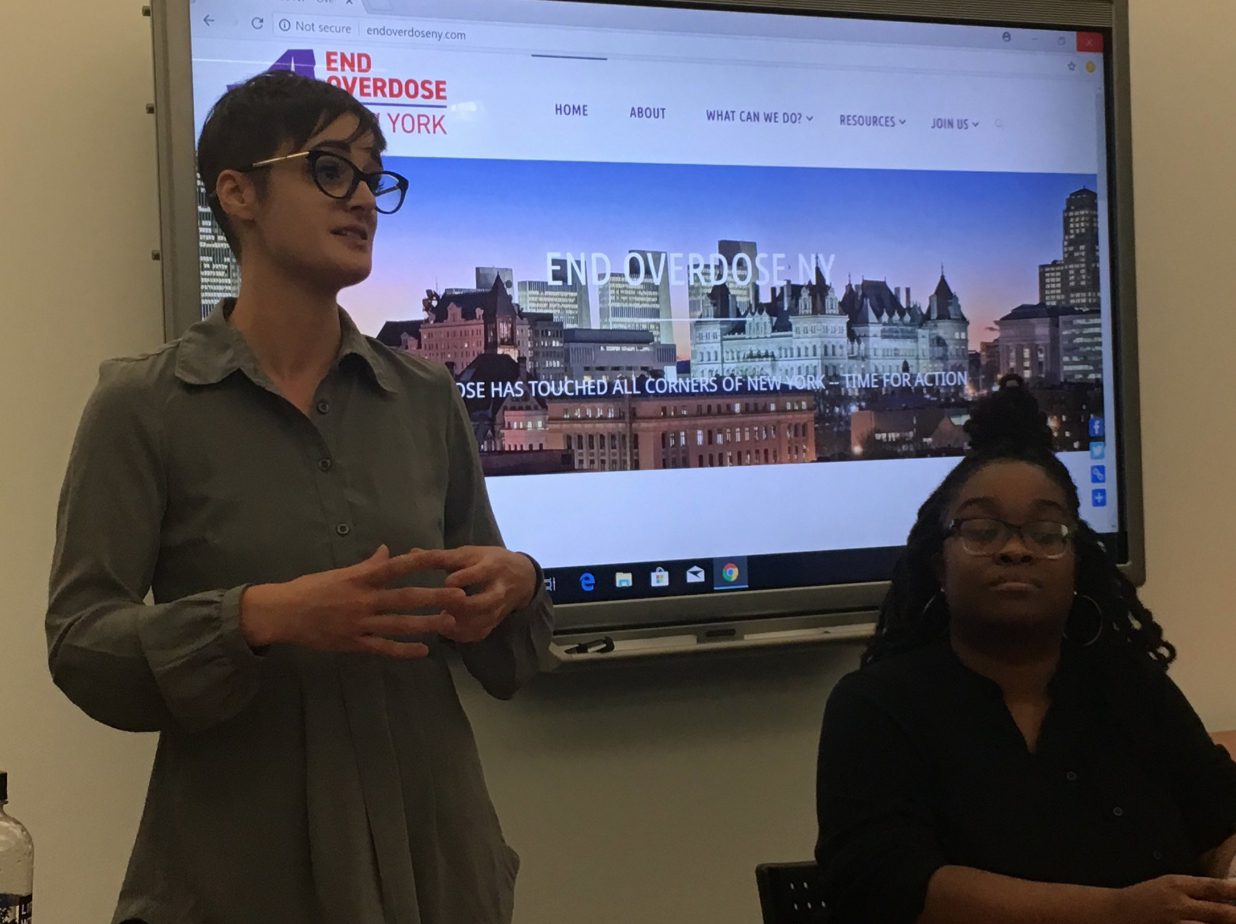Last year, for the first time in 11 years, black people had the highest rates of drug overdose in New York City—with older men living in areas of high poverty, like the South Bronx, the most impacted.
The city’s overdose mortality data from 2017 were presented on October 15 at a public briefing organized by the Drug Policy Alliance (DPA) and the New York City Department of Mental Health and Hygiene (DMHH). The presentation began with an emphasis that the number of NYC overdose deaths is at an all-time high.
Now Michelle Nolan speaking about how we are seeing a historic number of overdose deaths in NYC- although rate did not increase steeply recently, the number is alarming. pic.twitter.com/XDxpm5j6o6
— DPA Office of Academic Engagement (@DrugPolicyNerds) October 15, 2018
Another key point was the role that polysubstance use plays in overdoses—a crucial fact often ignored in sensationalist media reporting on the “opioid epidemic.”
The majority of deaths in NYC are poly substance and illicit opioids are the major drivers. pic.twitter.com/aAw2jO7ihp
— DPA Office of Academic Engagement (@DrugPolicyNerds) October 15, 2018
One audience member aptly pointed out that many black people between the ages of 55 and 84—the age range in which most black overdose deaths occur—consider themselves to be cocaine users, not necessarily opioid users. However cocaine is now frequently found laced with fentanyl (the potent synthetic opioid). This raised the broader question of how people can access harm reduction tools like naloxone if they are not visiting syringe exchanges or other venues where such tools are frequently distributed.
On the panel, a representative from DMHH’s Rapid Assessment and Response team spoke of strategies being implemented, such as community outreach taking place in barber shops and bodegas, to close this gap in access. Additionally, fentanyl test strips can be used both to check if a substance is adulterated and as a pedagogical tool to raise awareness of fentanyl’s pervasive presence in the wider drug supply.
This is specific only to black NYCers- showing that cocaine and fentanyl involved deaths are driving in recent years. Very distinct from the white overdose characteristics involving mostly heroin/fentanyl. pic.twitter.com/ctTH1jqr96
— DPA Office of Academic Engagement (@DrugPolicyNerds) October 15, 2018
NYC and statewide action strategies were presented by representatives from DPA and VOCAL-NY, a membership-based organization that builds power among low-income people affected by the drug war, among other issues.
On a city level, they advocated financial divestment from drug prosecution and from the NYPD’s drug unit, which treats overdose deaths as crime scenes. They instead recommended investing in public health programs, such as those administered by the Department of Mental Health and Hygiene.
At the state level, Governor Andrew Cuomo has touted his direction of new federal funds towards opioid addiction prevention and treatment services—yet the funds for his Opioid State Targeted Response Grant were originally allotted over a year ago. Given the magnitude of the crisis, VOCAL-NY and DPA are calling on Cuomo to commit significantly more funds to overdose-related services.
The event was not just a presentation of data and strategies—it was itself a form of direct action, in which DPA’s New York State Director Kassandra Federique confronted the political passivity of many of the (mainly white) legislative representatives in the audience.
“We’re not doing press conferences anymore. We’re not doing photo ops anymore. We are showing up to your office. We are protesting you. The reason we’re in this moment is because of the [representatives’] abdication of responsibility.”
“No one here can say they didn’t know [about the issue of overdose deaths],” Frederique continued. “We’re at this moment where my life goal is that black people in America are in a better place than when I was born into. In this moment of Black Lives Matter, of pro-immigrant, of pro-people, of ‘Love is Love,’ people [must] stop dying from something that is preventable.”
Photograph: DPA Office of Academic Engagement





Show Comments